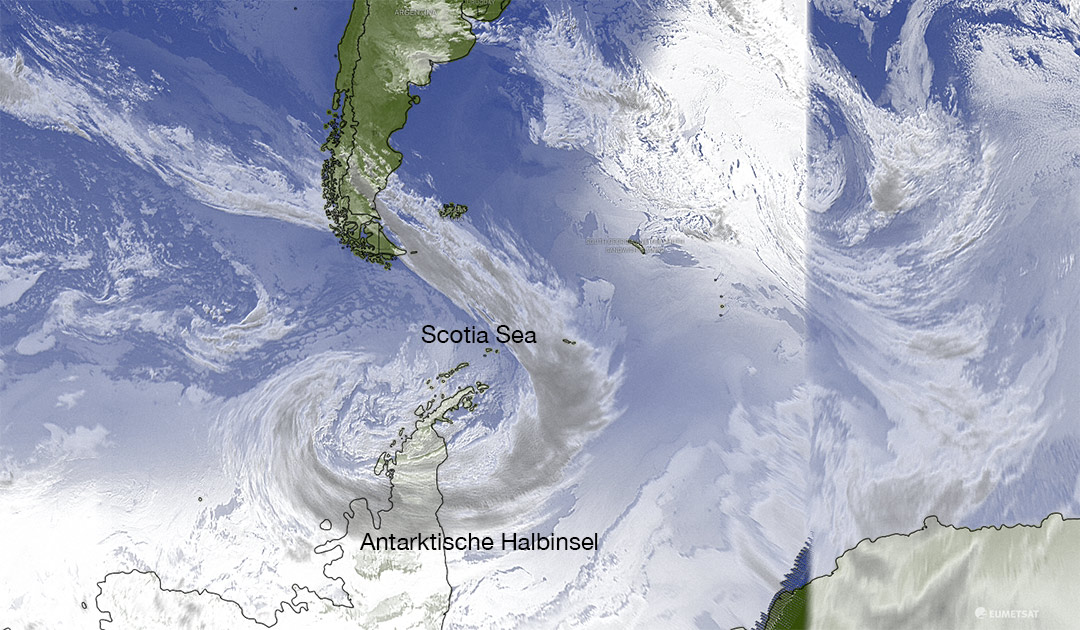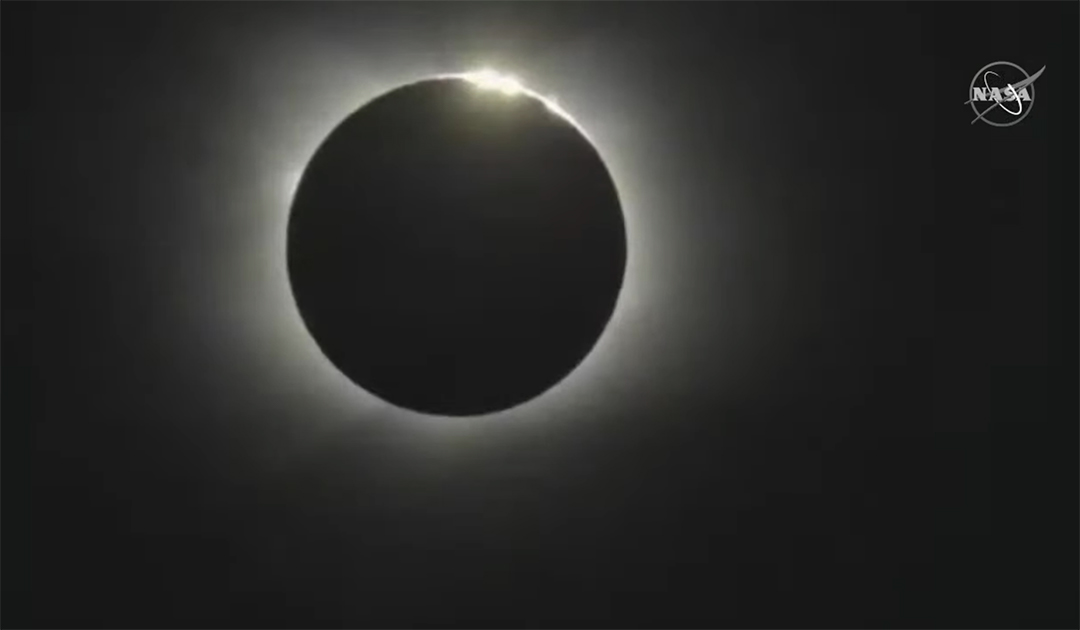
The only total solar eclipse this year could only be observed in Antarctica yesterday morning and accordingly few people were able to enjoy the spectacle. In addition to a few dozen scientists at research stations, some of whom naturally took advantage of the rare event for investigations, adventurers on expedition ships also tried to catch a glimpse of the sun, which was briefly eclipsed by the moon. However, the weather did not seem to have cooperated everywhere.
A solar eclipse occurs when the sun and moon are in line with the earth. During a total solar eclipse the apparent diameter of the moon is larger than that of the sun and covers it completely, so that also solar corona becomes visible. While a total solar eclipse occurs about every 18 months in the mid-latitudes, it is a very rare event in the Arctic or Antarctic because the polar regions occupy a comparatively small area and the moon’s shadow falls on them less frequently. The last total solar eclipse in Antarctica was in November 2003 and the next one will not be observed until December 2039. An annular solar eclipse, in which the apparent size of the moon is smaller than that of the sun and the moon therefore does not completely block the sun, occurred in the Arctic on June 10 this year.

Participants of the JM Pasachoff Antarctic Expedition apparently had a clear view of the sun from Union Glacier in the Ellsworth Mountains and shared the event with the world via livestream provided by NASA. The exepditional travelers hoping for clear skies near the Antarctic Peninsula and in the Scotia Sea on the 16 passenger ships were apparently less fortunate, according to the satellite images. A thick band of clouds obscured the view there and probably gave occasional glimpses of the sun at best.

International researchers from the US, the UK and Denmark, among others, used the rare event to study the changes in the ionosphere that occur during a solar eclipse. Electric currents flow constantly through the ionosphere but there are differences between the northern and southern hemispheres that scientists cannot yet explain with certainty. When the sunlight weakens during an eclipse, the temperature and current flow in the ionosphere change in a fairly predictable way. The researchers have measured these changes and now hope to gain new insights into the causes of the differences between the two hemispheres. It was the first opportunity to observe detailed changes in the ionosphere from both hemispheres during a solar eclipse.
“The eclipse is a natural experiment for us,” says Michael Hartinger, a geophysicist at the Space Science Institute in Los Angeles, California, whose team studies the eclipse. “It provides us with the best controlled conditions to understand these asymmetries between the North and the South.”

In near-Earth space, electricity flows along the Earth’s magnetic field lines, which are best observed near the magnetic north and south poles, where the strongest currents enter and leave the ionosphere. A network of instruments for observing the ionosphere has been in place in Greenland since the 1990s, and one was completed in Antarctica in 2016.
Hartinger’s team measured atmospheric currents in both Greenland and Antarctica during the eclipse. The instruments in Antarctica and Greenland lie on the same magnetic field line, allowing researchers to study in detail the electrical currents as they travel from one pole to the other, according to the United States Antarctic Program’s news magazine The Antarctic Sun.

“We need to know what’s happening at both ends of the field lines to really understand what’s generating the electric currents,” Hartinger said. “What’s special here is that we have a network of instruments in both hemispheres, and we have a lot of other supporting data now that we didn’t have in 2003.”
While the next total solar eclipse in Antarctica won’t be seen for another 18 years, there will be an annular solar eclipse in the near future, on February 17, 2026.
Julia Hager, PolarJournal
More on the subject:





